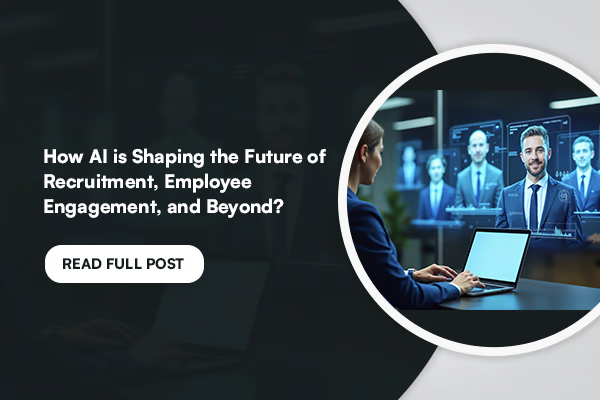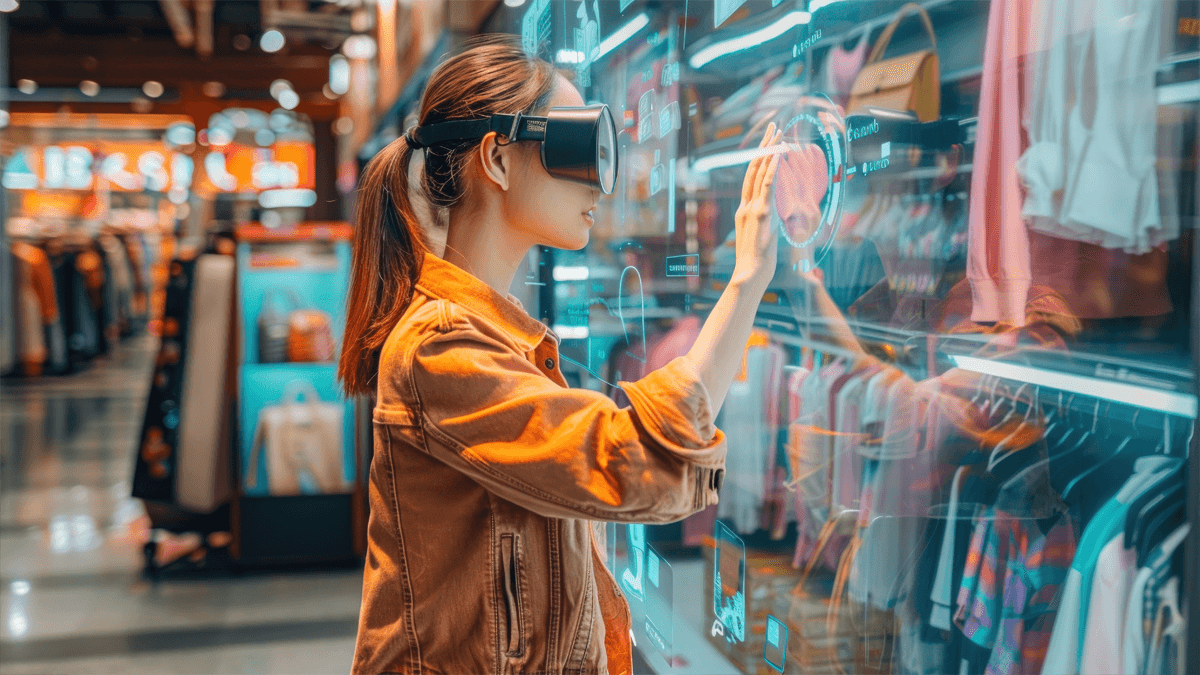In the current world of workplaces, have you ever wondered how organizations find the right talent, keep employees engaged, and ensure operational efficiency all at once?
The answer lies in the transformative power of Artificial Intelligence (AI) in Human Resources (HR). From recruitment to employee engagement, AI is streamlining traditional HR processes and introducing innovative ways to enhance employee management and satisfaction.
AI in Recruitment: Beyond Resumes
Recruitment is one of the most time-consuming tasks for HR departments. Traditional hiring processes often involve sifting through countless resumes, which can be error-prone and biased. AI in recruitment is changing this narrative by introducing tools that can screen resumes, analyze candidates’ skills, and even predict their cultural fit within an organization.
AI-powered Applicant Tracking Systems (ATS) can quickly scan resumes to identify top candidates based on predefined criteria. Beyond keyword matching, modern AI systems use natural language processing (NLP) to understand the context and assess applicants’ qualifications more holistically. This ensures a faster, fairer, and more efficient hiring process.
Video interview platforms powered by AI are another game-changer. These tools analyze body language, tone of voice, and facial expressions to provide deeper insights into a candidate’s personality and potential. This not only reduces bias but also helps recruiters make more informed decisions.
AI for Employee Engagement: Building a Connected Workforce
Once employees are onboarded, keeping them engaged is crucial for retention and productivity. AI for employee engagement is empowering HR professionals with the tools to create personalized and fulfilling work environments.
AI-driven sentiment analysis tools can gauge employee morale by analyzing feedback from surveys, emails, and even casual conversations in workplace chats. These insights enable HR teams to address concerns proactively, fostering a culture of trust and collaboration.
Personalized learning and development platforms powered by AI are also becoming central to employee engagement. These systems assess individual employees’ skills and career aspirations, recommending tailored training programs to help them grow. By aligning personal goals with organizational objectives, AI ensures that employees feel valued and motivated.
Moreover, AI chatbots are transforming the way employees interact with HR. These virtual assistants can handle routine inquiries, such as leave policies or payroll details, freeing HR teams to focus on strategic tasks. Employees benefit from instant, accurate responses, enhancing their overall experience.
Artificial Intelligence for Employee Management: Smarter Workplaces
AI is reshaping employee management by automating repetitive tasks and offering actionable insights that drive better decision-making. For instance, AI-powered tools can monitor workforce performance in real-time, identifying trends and areas that need improvement.
Predictive analytics is another amazing aspect of AI in HR. By analyzing historical data, AI can forecast employee turnover, helping organizations take preventive measures to retain top talent. This predictive capability is especially valuable for large enterprises, where managing workforce dynamics can be complex.
Additionally, AI is facilitating flexible work arrangements by optimizing resource allocation and scheduling. Intelligent systems ensure that tasks are distributed equitably, preventing burnout while maintaining productivity. For remote teams, AI tools provide insights into collaboration patterns, ensuring seamless communication and teamwork.
Ethics and Challenges: Balancing Innovation with Responsibility
While the benefits of AI in HR are undeniable, they come with challenges that organizations must address. Privacy is a significant concern, as AI tools often analyze sensitive employee data. To gain employees’ trust, organizations must ensure transparency in how AI is used and invest in robust data protection measures.
Another challenge is mitigating algorithmic bias. AI systems are only as unbiased as the data they are trained on. If the training data reflects existing prejudices, AI may inadvertently perpetuate them. Regular audits and diverse datasets are essential to ensure fairness and inclusivity.
Finally, the human touch in HR should not be entirely replaced by AI. While AI can enhance efficiency and decision-making, the emotional intelligence and empathy that HR professionals bring to the table are irreplaceable. Striking the right balance between automation and human intervention is key to harnessing AI’s full potential.
The Future of AI in Human Resources
As AI technologies continue to evolve, their applications in HR will only expand. Imagine virtual reality onboarding experiences personalized for each new hire or AI systems that can predict and resolve workplace conflicts before they escalate. These innovations are no longer distant possibilities—they are on the horizon.
AI is also likely to play a significant role in diversity and inclusion initiatives. By identifying unconscious biases in hiring and promotion processes, AI can help create more equitable workplaces. Furthermore, real-time analytics will empower HR teams to design strategies that cater to diverse employee needs, fostering a more inclusive culture.
Conclusion
The integration of AI in human resources is transforming how organizations attract, engage, and manage talent. From making recruitment smarter and faster to enhancing employee engagement and optimizing workforce management, AI is setting new benchmarks in HR practices. However, as organizations embrace this technology, they must navigate ethical challenges and ensure that AI complements rather than replaces the human element in HR.
Artificial intelligence is not just a tool for operational efficiency—it is a catalyst for creating smarter, more connected, and more inclusive workplaces. As businesses continue to adapt to a rapidly changing world, leveraging AI in HR will be crucial for staying ahead of the curve.




